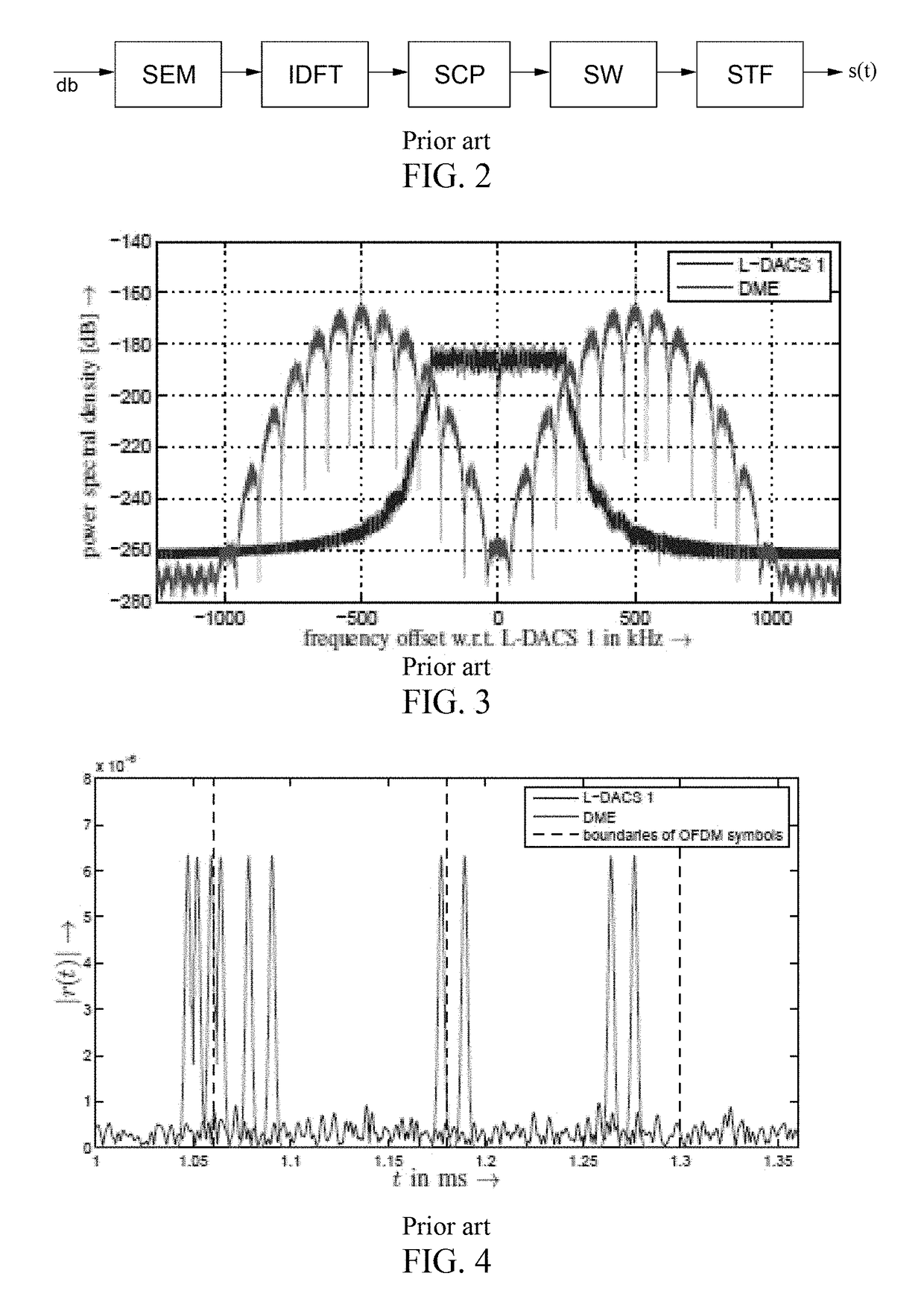Method for frequency—and time-selective interference suppression for a communication system based on OFDM, and receiver therefor
a communication system and frequency suppression technology, applied in multiplex communication, orthogonal multiplex, baseband system details, etc., can solve the problems of significant reduction of signal-to-noise ratio on all subcarriers, reduced bit error rate after decoding, and limited capacity of this system, so as to facilitate the estimation of interference power in time and frequency domain, reduce ici, and reduce the effect of bit error ra
- Summary
- Abstract
- Description
- Claims
- Application Information
AI Technical Summary
Benefits of technology
Problems solved by technology
Method used
Image
Examples
Embodiment Construction
[0056]The receiver structure of a frequency and time-selective interference suppression according to the invention for a communication system based on OFDM using a filter bank is shown in FIG. 1. Inventive constituents of the receiver E are a blanking unit BU for a frequency-selective pulse-blanking with the aid of a filter bank, a detection unit DU for the frequency-selective detection of the interference, a blanking mitigation unit BMU for adaptation to interfered disturbances introduced by pulse-blanking and an ICI cancellation unit ICU for eliminating the interference introduced by pulse blanking.
[0057]In Q. Zhang, Y. Zheng, S. Wilson, “Excision of Distance Measuring Equipment Interferences from Radio Astronomy Signals”, The astronomic journal, pp. 2933-2939, 2005, the suppression of DME-signals in broadband astronomy signals is examined with the aid of a filter bank. This idea is now transferred to an OFDM-system. The blanking unit BU according to the invention consists of the ...
PUM
 Login to View More
Login to View More Abstract
Description
Claims
Application Information
 Login to View More
Login to View More - R&D
- Intellectual Property
- Life Sciences
- Materials
- Tech Scout
- Unparalleled Data Quality
- Higher Quality Content
- 60% Fewer Hallucinations
Browse by: Latest US Patents, China's latest patents, Technical Efficacy Thesaurus, Application Domain, Technology Topic, Popular Technical Reports.
© 2025 PatSnap. All rights reserved.Legal|Privacy policy|Modern Slavery Act Transparency Statement|Sitemap|About US| Contact US: help@patsnap.com



